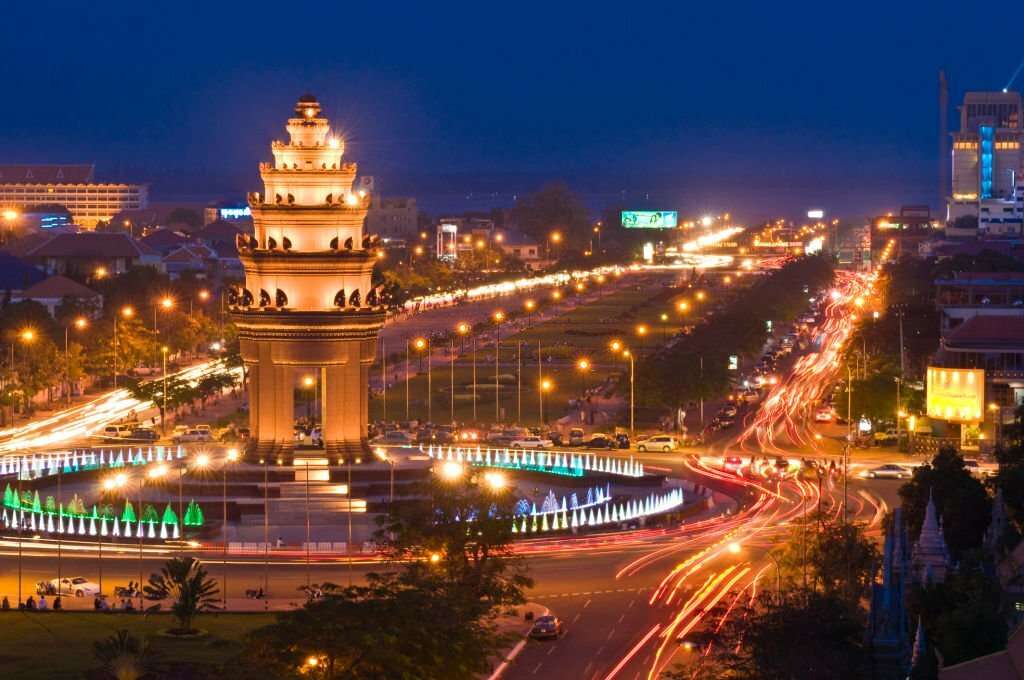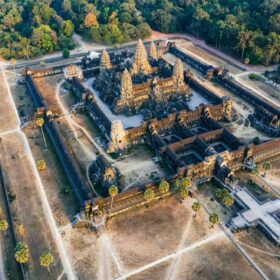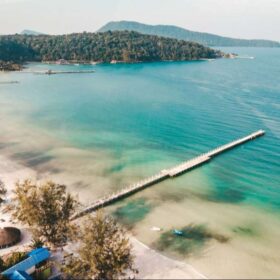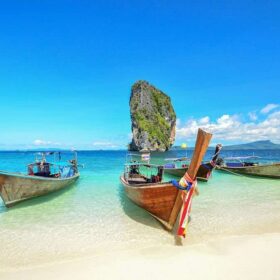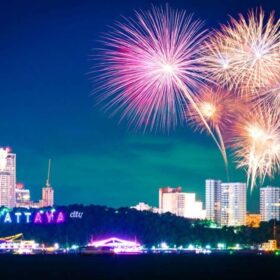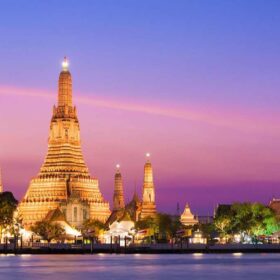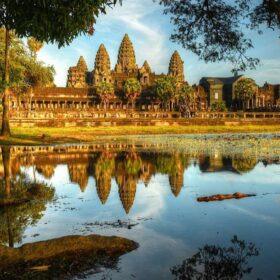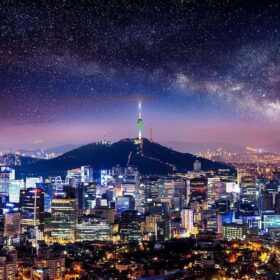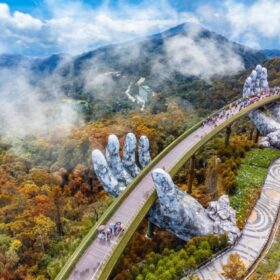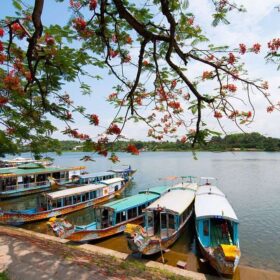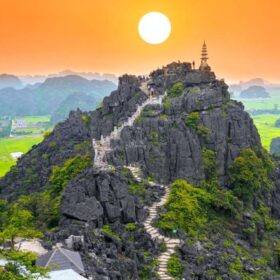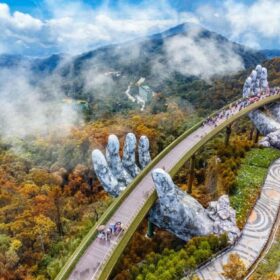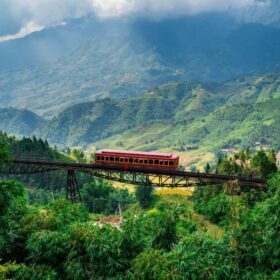Phnom Penh, a vibrant and bustling city, serves as the pulsating heart of Cambodia. This sprawling capital city is situated along the banks of both the Tonlé Sap and Mekong Rivers, offering a fascinating blend of wide central boulevards and narrow, winding back alleys where the old seamlessly mingles with the modern.
While the Royal Palace complex stands out as the city’s premier attraction, Phnom Penh also holds immense significance for those keen on delving into Cambodia’s 20th-century history. It houses two profoundly sobering sites: the Killing Fields of Choeung Ek and the Tuol Sleng Museum (formerly S-21 prison), both shedding light on the period of terror endured by this nation during Khmer Rouge rule.
For travelers en route to Cambodia’s renowned tourist destination, Angkor Wat, a stopover in the capital proves highly advantageous, as it provides access to the exceptional National Museum of Angkor.
To discover more options for sightseeing and activities in Phnom Penh, please consult our list of the city’s top attractions and recommended things to do.
The Royal Palace
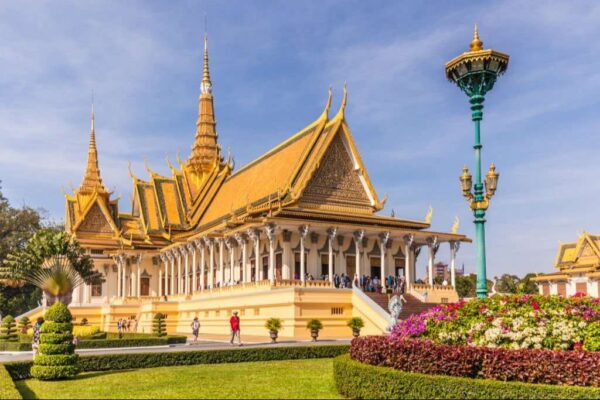
Constructed during the 1860s, this magnificent palace has long served as the royal residence in Phnom Penh, with the exception of a brief period of abandonment during the Khmer Rouge era.
Within the palace grounds, visitors will encounter numerous resplendent golden temples and quarters, each surpassing the previous one in beauty. This entire complex is situated along the riverbank, affording the opportunity to observe the passage of motorboats and paddle boats, as well as capture striking photographs of everyday life along the Phnom Penh riverside. Informational plaques and guides on-site provide insights into the history of Cambodia’s royal family and the history of Phnom Penh.
When planning your visit, it is important to dress respectfully in accordance with Buddhist culture. Women should ensure their knees and shoulders are covered, while men should wear shirts with sleeves.
National Museum
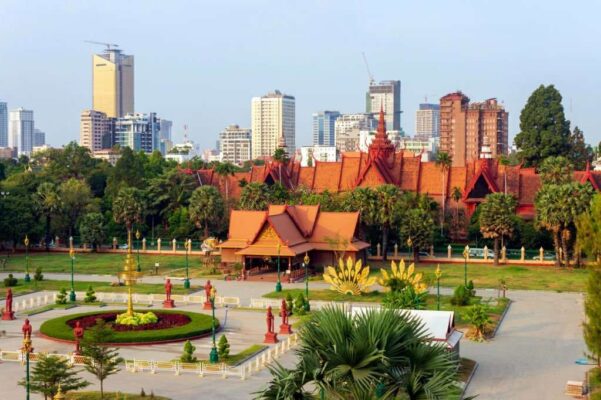
Featuring ancient artifacts dating back to the 1600s, captivating cultural performances by Khmer dancers, intricate stone busts portraying Buddhist figures, life-sized statues depicting Cambodian warriors, intricate models of traditional Khmer houses, attire and accessories worn by modern-day farmers, and much more, the National Museum offers a comprehensive portrayal of Khmer culture. Spanning from ancient eras to the present day, allocate a few hours to fully immerse yourself in the wealth of information presented across its diverse galleries.
The museum itself boasts stunning architecture, constructed using dark red clay bricks and crowned with roofs that ascend towards the sky. It is enveloped by a lush green garden, providing inviting seating areas and refreshing shade. Within the garden, you’ll also discover several pagodas housing serene meditating Buddha statues.
Admission to the museum ranges from $5 to $10, with the option of an audio guide available to enhance your exploration of the exhibits.
The Russian Market
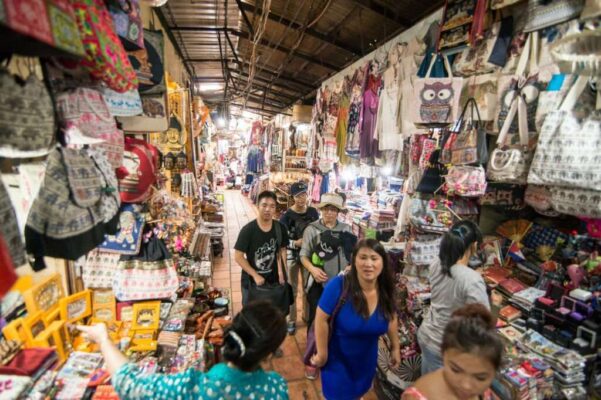
Many tuk-tuk drivers can be heard hailing you on the streets, offering to transport you to the Russian Market. The moniker “The Russian Market” originated from its popularity among Russian expatriates during the 1980s. While you may come across a few “Russian” items such as Russian dolls and small Russian flags, the majority of the merchandise is distinctly Cambodian. Anticipate discovering excellent souvenirs like silk scarves, spices, woodcarvings, and more.
As one of the largest markets in Phnom Penh, boasting an extensive array of goods, the Russian Market is the ideal destination to explore if you’re pressed for time, as it offers a diverse selection of items.
It’s advisable to carry a bottle of water when visiting this market, as the heat can be quite exhausting.
Wat Phnom
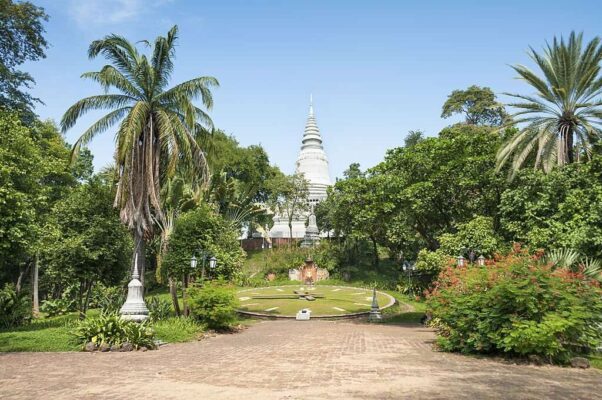
Phnom Penh’s terrain is notably level, with the sole elevation being the 27-meter-high mound that houses Wat Phnom temple.
The initial religious structure on this site is believed to have been erected in the 14th century and has undergone multiple reconstructions, with the present primary temple sanctuary originating in 1926.
Wat Phnom is among the city’s most significant Buddhist temples, frequently abuzz with locals making offerings and offering prayers at the various shrines encircling the central sanctuary.
S21 Prison
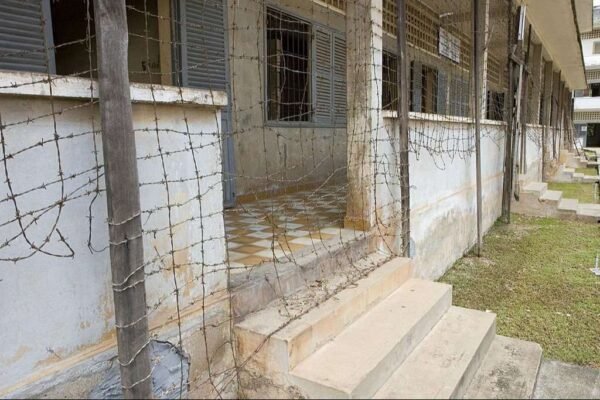
When the Khmer Rouge seized power in Phnom Penh, they required a location to assemble and brutally mistreat their victims, so they transformed a high school into a torture prison. Over a span of 4 years, 14,000 individuals were incarcerated in this prison, and tragically, only 7 managed to survive.
Today, the prison has been transformed into a museum, featuring photographs of detainees adorning the walls, preserved torture chambers, and narratives that vividly portray the harsh realities endured by these victims. Some parts of the prison exhibit scratch marks on the walls and blood stains ingrained into the floor. It is a grim yet crucial testament to history.
Outside the prison, an elderly man has set up a table, showcasing a book he authored about his survival at S-21 prison. He is one of the very few survivors, and today, he courageously shares his story in person.
Silver Pagoda
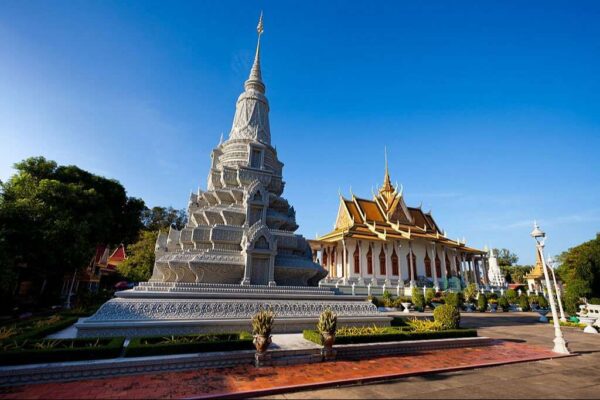
This splendid Buddhist temple exemplifies the essence of Southeast Asian culture. From its gleaming golden roof to the monks clad in vibrant orange robes, the Silver Pagoda breathes life into all your Cambodian imaginings.
Upon approaching the temple’s entrance, the reason behind its name, the “Silver Pagoda,” becomes apparent. The floor is adorned with 5,000 sparkling silver tiles, offered as a gift to Buddha. To preserve these tiles, walking on them is prohibited, but you can admire their beauty.
Ascend the majestic staircase, and you’ll arrive at the Temple of the Emerald Buddha, adorned with 2086 diamonds, glistening brilliantly. As if this opulence weren’t enough, this Buddha shares its space with an 80kg bronze Buddha, a solid gold Buddha, and a silver-gold Buddha, each with its own captivating story to recount.
The Killing Fields
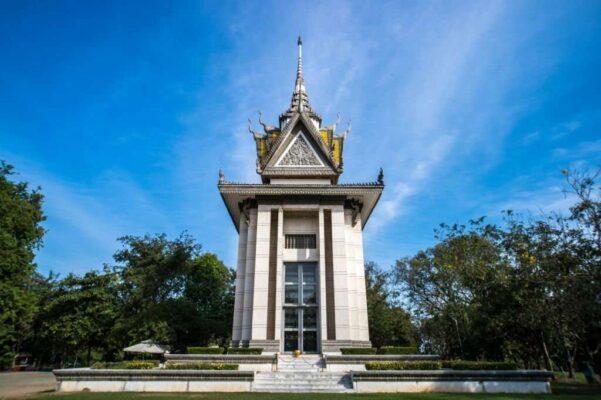
The Killing Fields are deeply emotional. It is neither pleasant nor easy, but if you wish to truly comprehend the horrifying reality of what occurred here in Cambodia, you must witness it firsthand.
These fields are the grim locations where hundreds of thousands of men, women, and children were brought and brutally killed. Their remains were deposited in massive ground ditches, and their bones still protrude from the earth. The sight of large pits with human bones and clothing is not a staged dramatic scene; in fact, when heavy rains descend upon these fields, more bones often resurface.
During your visit to the site, you’ll receive a headset that will guide you through, providing a vivid account of the monstrous acts that transpired here, complete with narration and personal stories from survivors. As you walk through, maintain a somber and respectful demeanor while absorbing the harrowing history.
Silk Island
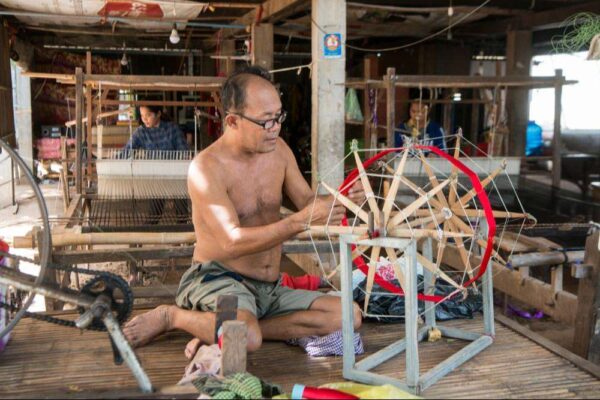
Most of the silk scarves and cotton tops you encounter in the markets throughout Cambodia originate from Silk Island, also known as Koh Dach. Situated in the middle of Phnom Penh, this small island offers a unique opportunity to explore the rural side of Cambodia without venturing far from the city.
Many of the island’s residents live in traditional Cambodian teak wood houses along dirt roads. You will notice that nearly every house has a silk spinning machine underneath, where women are diligently handcrafting these beautiful accessories.
On the island, there’s a silk factory where silkworms produce silk, and workers harvest it. You can take a guided tour of the factory and purchase silk products at a fraction of the usual price. Afterward, you can ask the locals for directions to a delicious and affordable riverside restaurant, where you can enjoy an authentic meal and even join the locals in taking a refreshing dip in the river with your clothes on.
Cruise on Phnom Penh’s Rivers
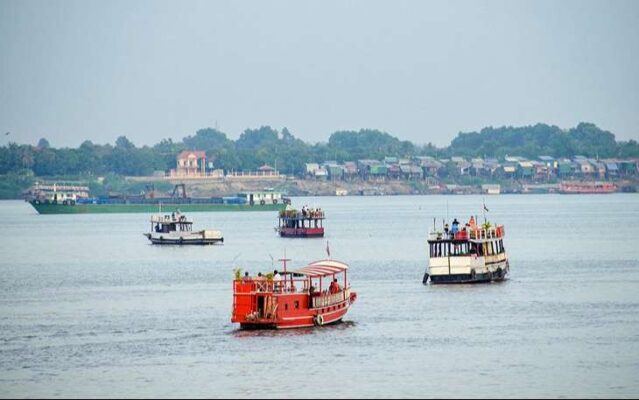
Phnom Penh is a riverside city, and one of the most serene ways to explore the city is by taking to the water. You can find scheduled tourist boat cruises departing from the riverfront between 5 p.m. and 7:30 p.m., following the Tonlé Sap and Mekong Rivers.
Alternatively, you have the option to rent a private boat nearby and embark on a water journey at any time of the day (be prepared for some negotiation if you choose this option).
This offers a wonderful escape from the bustling streets filled with motorbikes, allowing you to enjoy the more tranquil rhythm of local life along the river.
Phnom Penh Night Market
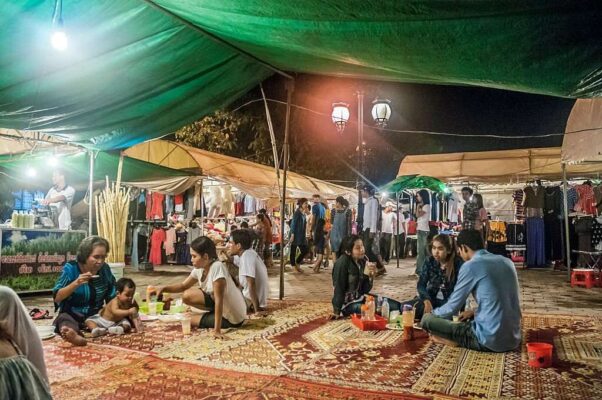
After a fulfilling day of cultural exploration, indulge in the contemporary delights of Cambodian life at the Phnom Penh Night Market. Engage with cheerful vendors while savoring bites of Cambodian cuisine. You’ll encounter a variety of offerings such as grilled skewered meats, noodle soups, dried seafood, and fruit shakes. Refreshing beverages are also available. In the vicinity, you’ll find plastic tables and chairs where you can gather your delectable finds and enjoy a feast.
Once you have satisfied your appetite, meander through the shopping areas. Countless stalls await, offering clothing, jewelry, bags, shoes, dishes, hardware, and an array of small trinkets that serve as perfect souvenirs.
Phnom Chisor
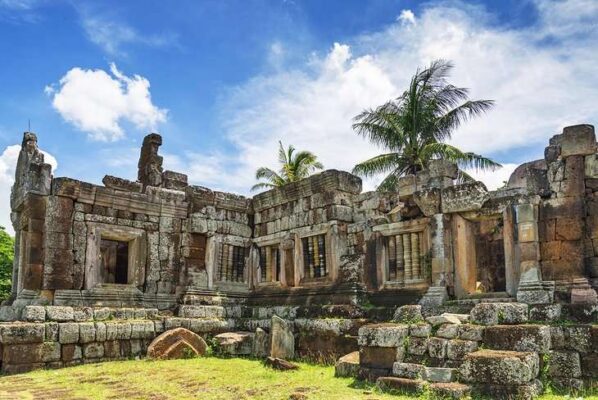
Located approximately 70 kilometers to the south of central Phnom Penh, the Phnom Chisor temple is perched atop the 133-meter-high summit of Chisor Mountain. This brick temple, constructed during the rule of Angkorian Empire King Suryavarman I, is dedicated to the Hindu deities Vishnu and Shiva. Its origins date back to the 11th century.
Climbing the staircases to reach the temple can be quite challenging, especially on hot days. However, the panoramic views of the surrounding landscape below, featuring a picturesque mosaic of lush green farmland and rice fields nestled among trees, make the effort worthwhile.
Most visitors choose to hire a private driver or join a guided tour to reach this site, as there is no direct public transportation available. It’s advisable to arrive early to avoid the heat.
FAQs
Q: Is Phnom Penh safe for tourists?
A: Phnom Penh is generally safe for tourists, but like any other city, it’s important to take precautions and be aware of your surroundings.
Q: What is the best time to visit Phnom Penh?
A: The best time to visit is during the dry season, which typically falls between November and March.
Q: Are English speakers common in Phnom Penh?
A: Many locals working in the tourism industry speak English, so communication shouldn’t be a major issue for tourists.
Q: How do I get around in Phnom Penh?
A: Tuk-tuks, taxis, and motorbike taxis are popular modes of transportation in the city. Always agree on a fare before starting your journey.
Q: Can I use US dollars in Phnom Penh?
A: Yes, US dollars are widely accepted in Phnom Penh, but it’s advisable to also carry some Cambodian riel for smaller transactions.

